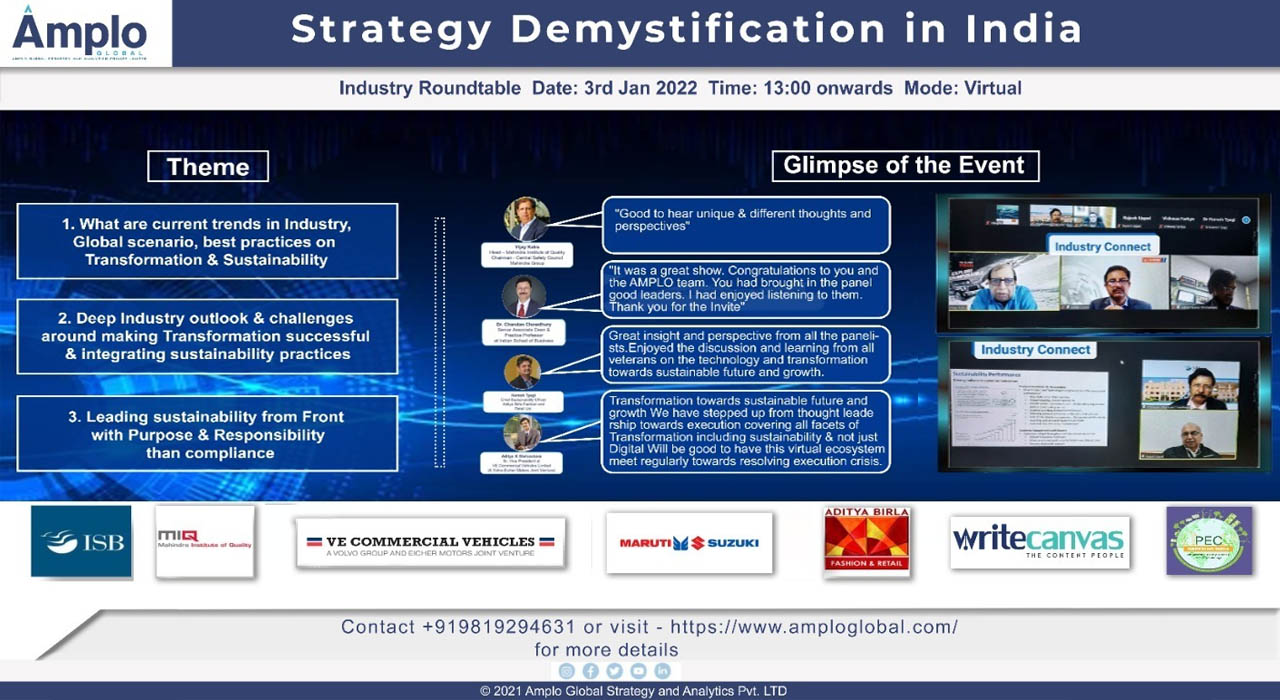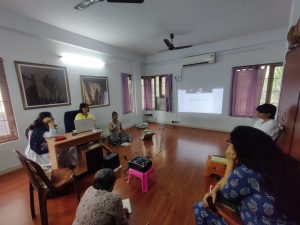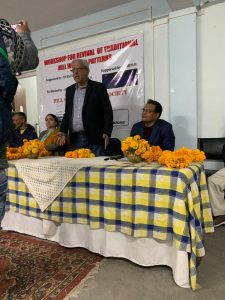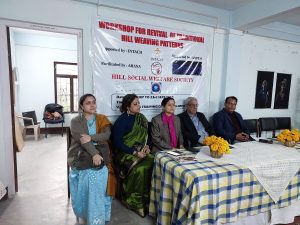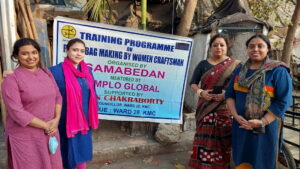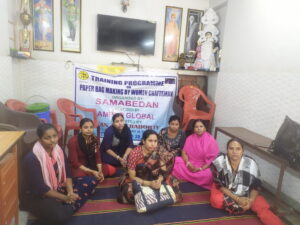Transformation & Sustainability: India's Roadmap for Success
| Uncover India’s roadmap for success in transformation & sustainability. Embrace collaboration, visibility, and impactful execution for a brighter future. |
Typically, sustainability means “meeting the needs of the present without compromising the ability of future generations to meet their own needs.”- Ms.Gro Harlem Brundtland.
Strategy for successful execution of transformation and sustainability
With a strong wind for transformation and sustainability, India now needs to get ready for execution success. The focus is on strategy that is driven by data, design and AI.
Essentially this means demystifying and democratising strategy for business sustainability and transformation. Business sustainability is different, business sustainability means managing the triple bottom line- a process by which companies manage their financial, social and environmental risks, obligations and opportunities.
Let’s understand some trends
Some of the recent industry trends and best practices on transformation and sustainability reaffirms the belief that it’s the perfect time for Industry 4.0 driven strategy formulation:
● Commitment to sustainability- most international customers are very particular about the current carbon footprint and future plans when they buy the products
● Cradle to grave traceability- companies today are under pressure to have a strategy which provides them with traceability of products from cradle (manufacturing) to grave (disposal)
● Laws of the land and international norms- the laws of both the lands are becoming increasingly important; countries where companies do their business and countries where the customers are
● Visibility on manufacturing and compliance processes- it is seen that end consumers are becoming more aware and are expecting visibility on both manufacturing and compliance processes
● Zero defects and zero effects products- it is not just about producing goods with zero defects, it is also about having zero adverse environmental effects
● Zero physical prototype- the need for physical prototyping has decreased with the advent of cutting edge technology. Digital twinning is being used in various phases for prototyping purposes
Three different dimensions of BUSINESS TRANSFORMATION- INDUSTRY 4.0
1. Stronger customer centricity- the ability to not only understand whether customers are happy but also whether we have the ability to really understand what customers need? Being futuristic and investing in innovation is the need of the hour. So, there is an upward graph in the number of companies leveraging data, AI and machine learning to enhance customer centricity. Companies have become much more agile than before.
2. More efficient production process- whatever is the facility, they find that by leveraging digital technologies, like connected factories and edge computing they are able to enhance productivity.
3. New marketing and business models- people are talking about doing a lot of innovation not only in the product but also in business models and methods of marketing.
In recent times, it is important to ensure there is digital continuity across the value chain. During covid19, companies have realized that the digital value chain is becoming increasingly contactless. It is becoming a must-have while the innovation leaders in the industry are talking about leveraging digital innovation platforms to get ahead in the game.
Execution Crisis Unleashed
Most of the organizations in India have big dreams and plans but when it comes to execution, they face failure because execution is a long, round process and in current times it has become even more difficult to execute plans. Organizations need good resources and a great strategy to finish the game:
● Execution strategy is more important than
● The game has changed during last four decades which can be categorized into phases-
○ Customers have lot of choices due to open economy
○ Technology is becoming uniformed; markets are no longer led by a few big players
○ Change in speed and agility. Perfection has become the reality
○ In the current scenario, a product is a success or failure. There is no way in between, because customers have a lot of similar options. So, ‘PLAY TO WIN’, and ‘RECOVER FAST TO LAST’ are the new mantras in the market.
○ Today, things like governance, safety, sustainability are becoming more important and critical for damage control and sustainability in the business.
Insights and stories shared by Industry Leaders
Mr. Dipu KV, President at Bajaj Allianz GIC (Insurance Industry) says that sustainable transformation strategy starts with customers. It is important to hear the customers and their concerns. From there stems the stated and latent needs of the future customer.
This information forms the strategic baseline for transformation. This leads to capability modeling which includes process decomposition, rating and reviewing the current systems and processes. Thereafter reengineering them and creating to-be which encapsulate the future needs of customers and prospects. The final stage would be executing the strategy with the right digital solutions.
Mr. Naresh Tyagi, Chief Sustainability Officer, Aditya Birla Fashion and Retail Ltd. has shared with us in details of their sustainability framework.
● Responsible Stewardship- create a framework to move us towards international standards and mitigate our impacts on ‘Externalities’
● Strategic stakeholder engagement- gain knowledge to understand how and when ‘External Factors’ will change and when disruptions to our business may occur.
● Future proofing- include adaptation to external factors in our business strategic plans.
‘Process-led’ to ‘product-led’ based on 3 key pillars driving sustainability beyond ABFRL’s operations
1. Customer Centric (Inclusive communities)
a. Sustainable labels- define and achieve targets based on sustainable attributes for product labelling.
b. Circular economy- recycle or upcycle 10% products by volume.
2. Design and Development(clean by design)
a. Sustainable attributes- 50% garments to have 2 sustainable attributes.
3. Supply Chain(Sustainable collaborations)
a. Product Intensity- achieve 5% reduction
b. Scope 3 emission- achieve 5% reduction
c. Sustainability index- assess critical tier 1 and 2 suppliers and describe results.
Mr. Rajesh Uppal, Sr Executive Director (HR & IT) at Maruti Suzuki India Ltd. shared with us that they have a three pillar approach-
1. Economic Pillar- which looks at the financial performance.This essentially balances out the concept of sustainability as an expense and sees it for its real value
2. Environment Pillar- which looks at the planet and resources and how we manage everything around that.
3. Social Pillar- this looks at how we manage the communities around and how the development of ecosystems is of utmost importance.
Recently a Roundtable with 11 top industry leaders took place on 3rd January, 2022 which was hosted by Amplo Global Strategy and Analytics Pvt Ltd. It was a grand success with leaders evangelizing to shape up a close-knit ecosystem unleashing on-ground execution issues towards failing transformation and sustainability initiatives. Leaders opened their hearts and minds stating clear reasons why value from transformation and sustainability initiatives are still not clearly visible in spite of investments being made.
Further, everyone echoed need for interconnectedness, collaboration and end-to-end visibility to be ingrained within execution for faster and impactful results.
